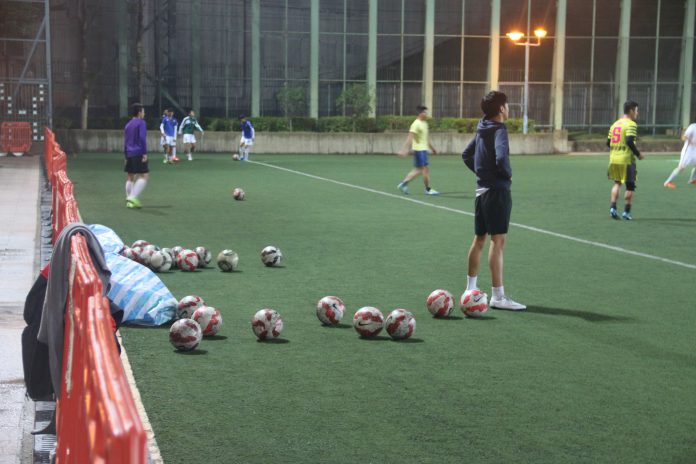Insufficient and inadequate provision of sports and recreational facilities mar cohesion in the community
By Eunice Ip, Ryan Li
In the morning at Tai Po’s Wan Tau Tong Estate, elderly residents queue to pick up free newspapers and to squeeze into fast-food shops in the shopping mall for breakfast. Wan Tau Tong is a small district packed with public rental housing estates and home ownership scheme flats. There is a sizable elderly population but apart from the shopping mall, few recreational facilities where senior citizens can spend their time.
Recreational and sports facilities are places people go to socialise, to get healthy and to relieve stress. They can enhance cohesion in a community and play an important part in determining how livable a community is. But to fulfill these important roles, they must match the needs of the communities in which they are found.
Do Hong Kong’s sports and recreational facilities fit the bill?
Tai Po is one of the districts which face the most serious aging problem in Hong Kong. According to the Planning Department’s Projections of Population Distribution for 2015 to 2024, the number of residents aged 60 or above in Tai Po is expected to rise from 67,100 in 2016 to 104,300 in 2024. This will create an increased demand for health services and it makes sense for the government to encourage the elderly to exercise more to stay fit and avoid illnesses. The problem is, for those elderly living in Wan Tau Tong, there is nowhere to go within striking distance.
Wan Tau Tong’s district councillor, Ken Yu Chi-wing, is disappointed with the lack of facilities for the elderly in his district.
“We often persuade the elderly not to stay at home, and they do listen to us. But even if they are willing to go out, there is not much they can do when they go downstairs,” he laments.
Although the government is aware of Hong Kong’s ageing problem, it seems few districts have actively developed sports facilities for the elderly. The legislator for the social welfare functional constituency, Peter Cheung Kwok-che, says the government has failed to adopt an “elderly mainstreaming” approach which would take account of the needs of the elderly in policy-making.
Cheung agrees with building more recreational facilities and organising sports classes for the elderly. However, he points out it is difficult for them to walk long distances from their homes to exercise. Therefore facilities should be located in each district to encourage the elderly to exercise frequently.
This is something that Wan Tau Tong district councillor Ken Yu is only too aware of. However, he and his fellow district councillors do not have the final say in deciding on which infrastructure projects are built.
Instead, that responsibility falls to the District Facilities Management Committee (DFMC). The DFMC’s were set up for each district in 2008 and membership comprises district councillors and government officials from various departments. The committees will negotiate with government departments over the various proposals and those that are passed will be submitted to the Legislative Council for funding approval.
For example, every district councillor in Tai Po can propose two projects, of high and low priority, to the District Facilities Management Committee (DFMC) every year. Ho
wever, according to Yu there are two major problems with this system.
Firstly, the facilities eventually built may differ from district councillors’ original proposals. Yu explains the DFMCs spend large sums of money on consulta
ncies to study the feasibility of the proposals received, and to make amendments if necessary. He says the consultancies may come up with useless facilities, such as rain shelters that cannot block rain. These problems are then left for district councillors to deal with.
Secondly, the committees do not usually approve large-scale projects due to their high costs. Even if they are passed, it takes a long time for construction to begin. For example, the sports’ centre on Plover Cove Road in Tai Po, was proposed in 2009 and was approved by the committee in 2011, but is still awaiting funding approval from the Legislative Council.

Apart from procedural issues, the way projects are executed presents other problems. Outside Tai Po Plaza, there is a cycling track which is divided into several short sections. The segmentation of the track and its proximity to the crowded shopping mall makes it inconvenient for cyclists.







































